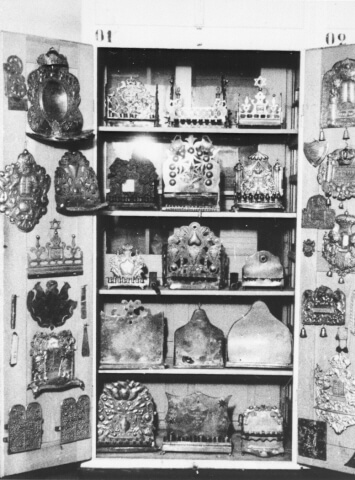
breast plates confiscated by the Nazis
Looting was a central motif in the Nazi persecution of Jews. The murder of 6 million Jewish adults and 1.1 million Jewish children provide a rich vein of plunder for the SS, the German war effort and the German population at large.
Every Jewish family who was deported and murdered possessed something, no matter how meagre it may have been. From the sparse furnishings of a single room to the abundant décor of a mansion, the Nazis expropriated all possessions. Bank accounts, businesses, factories and professional offices were all looted and confiscated.
Heinous acts of plunder were carried out in the death camps: Chelmno, Belzec, Sobibor, Treblinka, Auschwitz-Birkenau and Majdanek. The victims were made to surrender the final remnants of their personal possessions — photos, letters and birth certificates — as well as their clothes before they were crammed, naked into gas chambers and murdered. Women even had their heads and bodies shaved and their hair used either as padding for pillows or insulation for German army vehicles.
Recommended Reading
Götz, A. (2008), Hitler’s Beneficiaries: Plunder, Racial war and the Nazi Welfare State, New York: Holt
Nicholas, L. H. (1995). The Rape of Europa: The Fate of Europe’s Treasures in the Third Reich and the Second World War. London. Papermac
Dean, M. 2007. Robbing and Restitution. The Conflict over Jewish Property in Europe. New York: Berghahn
